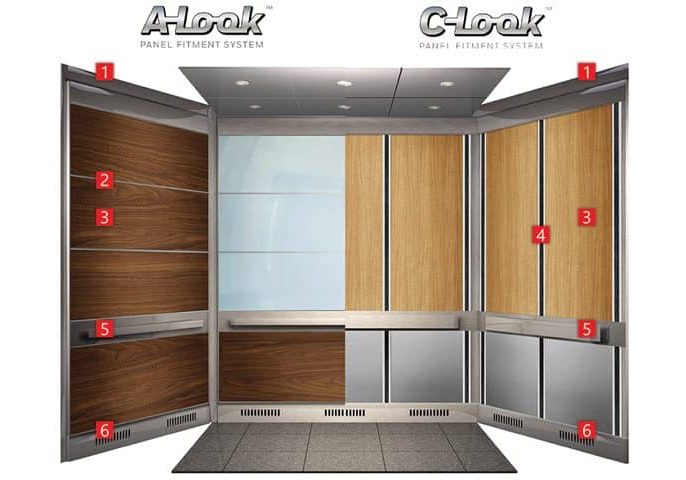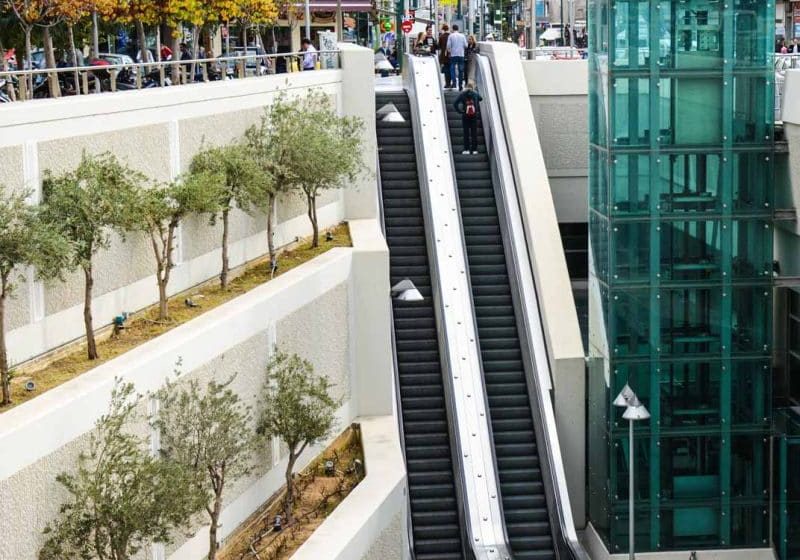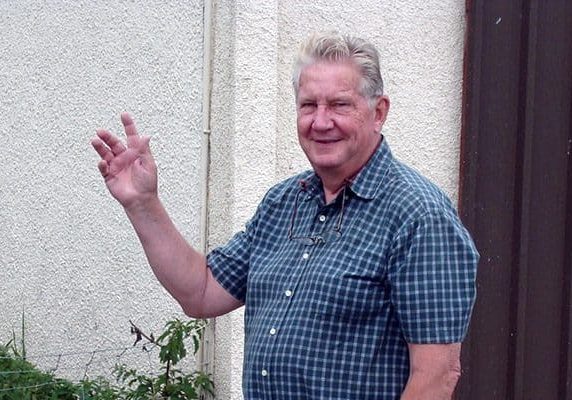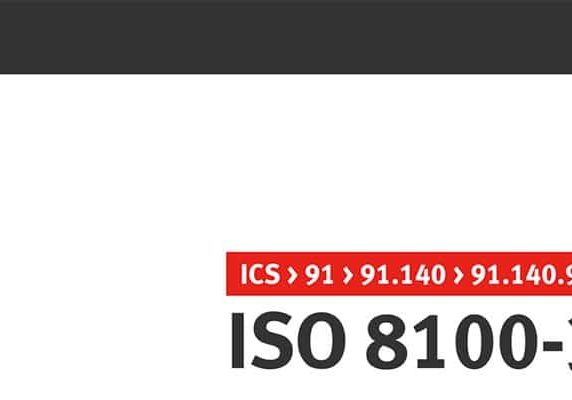Anja Blain (AB), CEO of Blain Hydraulics, headquartered in Heilbronn, Germany, shares insight about the company’s philosophy, strategy and future with your author (KW).
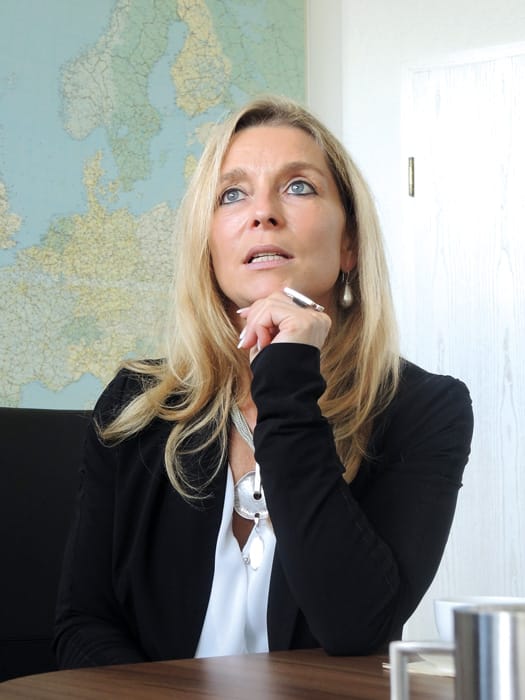
The late Roy W. Blain, a native of Greater Manchester, U.K., and an engineering graduate of Salford Royal Technical College, pursued a career in industrial hydraulics in England; Switzerland; Spain; the U.S.; and finally, Germany, where he founded Blain Hydraulics GmbH in 1971. From a one-man operation, the company grew strategically and steadily, adding products, gaining certifications and expanding its footprint worldwide. In 2015, it incorporated Blain India, and in 2018, Blain Turkey and Blain Hydraulics Inc., serving the North American market. Marking 50 years in business this year, Blain has customers and installations in more than 75 countries, and further growth is probable. It employs more than 90 people in Germany.
In 1999, company leadership passed to Roy Blain’s wife, Anja Blain, who holds degrees in Industrial Business Management and Linguistics. She joined the company in 1991, and her husband, described as a “visionary and a true gentleman,” passed away in 2014 (ELEVATOR WORLD, October 2014). Since becoming CEO, Anja Blain has been instrumental in leading one of the largest elevator valve manufacturers in the world and remains focused on keeping Roy Blain’s vision alive. An avid reader and traveler, she is the mother of two boys.
KW: Blain is 50 years old this year. What does that mean to you?
AB: For any company, 50 years is a big milestone. It not only endorses your position and business success, but also gives you a sense of happiness due to fulfilling social responsibilities and building an ecosystem of products and services on which many rely. The fact that thousands of customers globally trust your products and brand brings a lot of responsibility, motivation and positive energy to keep delivering.
KW: How has the journey been so far?
AB: Incredible! Five decades of presence takes you through all the possible ups and downs. A modest beginning in 1971 and the relentless hard work of my late husband and the team laid a solid foundation. From there, with a very clear business philosophy, Blain focused on developing the best hydraulic flow control valves for the elevator industry. As a component-only manufacturer, it wasn’t easy. We are the last link in a business-to-business chain but still have the most important component that drives a hydraulic elevator. Looking back at our growth, what we manufactured in a year in the early days is what we are doing in a week today. Everyone at Blain is part of the family. From humble beginnings to becoming the largest elevator valve manufacturer in the world has been a journey worth making.
KW: Highlight some achievements and challenges Blain has faced.
AB: I always see the achievements in context with the challenges and difficulties. Without challenges, there are no achievements. We have tried our best to create opportunities from challenges. Blain has consistently done well by staying focused on its core competencies and manufacturing products that not only deliver and meet — but exceed — customer expectations worldwide. A contributing factor in our success is the innovation and automation in manufacturing that has helped us keep production costs down. Our dedicated R&D team is passionate about engineering and product development.
Blain has a broad spectrum of valves. Standardization across our products and modernization of our infrastructure is continuous and evolving. We strongly believe that, to be relevant in changing times, we need to innovate and evolve. What was good and effective in 1980s and 1990s may need a different approach today.
Looking into our history, you notice that we have not only continually added new, innovative products, but also aligned our business strategies to suit the global markets we serve. For example, in the last few years, we started supplying components like pumps and motors that complement our control valves, thus simplifying our customers’ supply chain. This has helped us open new markets and expand our footprint quickly.
To be more accessible and responsive to our customers, Blain has established offices across all continents. Through our own offices and support engineers in the U.S.; Turkey; India; and, most recently, China, we have been successful in breaking down the geographical barriers our customers faced.
Blain is multilingual and multiethnic. We employ people of more than 14 different nationalities. That not only helps us communicate with our customers in the language of their choice, but also understand various markets and their needs more effectively.
Every business goes through challenges that could be internal or influenced by the market. We have been fortunate not to have faced any major challenges internally as we kept growing. External influences like economic recession, crisis in the construction industry, economic instability of some countries, geopolitical challenges in the form of sanctions or trade wars that make the Euro stronger have only made us more resilient over time. Our wide geographical footprint has helped us balance and sustain easily when the weather has been stormy in some countries or regions.
External influences like economic recession, crisis in the construction industry, economic instability of some countries, geopolitical challenges in the form of sanctions or trade wars that make the Euro stronger have only made us more resilient over time.
KW: How do you see Blain in the context of the rapidly evolving vertical-transportation (VT) industry?
AB: Hydraulics are an integral part of any industry, and that’s very much true in the VT sector. There is no doubt that, in the past one-and-a-half decades, gearless machine-room-less (MRL) installations have grown exponentially vis-à-vis hydraulics in the developed world. However, Blain has focused on developing markets to offset the numbers. Many had predicted the extinction of hydraulic lifts a few years ago, but the reality is something opposite: Blain has seen a continuous increase in sales in the last decade. True, the multinationals dominate the mid- and high-rise domain with their gearless MRL solutions, but there is no replacement for hydraulics in low-rise, freight, car-parking and buildings with low overhead applications.
Many had predicted the extinction of hydraulic lifts a few years ago, but the reality is something opposite
Blain valves have evolved. From mechanical control valves to servo electronic and further to variable-voltage/variable-frequency (VVVF) systems, the journey in product development continued to smart valves. The Internet of Things is the future, and the lift industry is increasingly embracing it. Our EV4 solution has advanced further in that direction. We call it the VVVF “smart valve.” You can set up the system (inverter) using a smartphone. Our system has onboard Wi-Fi so the technician can set up inverter parameters.
KW: How has the pandemic affected Blain?
AB: It has been challenging and very demanding, but we are not alone in this situation. Something new and suddenly enforced tends to be seen as difficult. Mobility restrictions, social distancing and unusual ways of working are not concerns, but adjustments that are the need of the hour. Thanks to our setup in information technology, manufacturing and supply chain, we have been very agile in enforcing hard changes on very short notice. The difficult days will pass. However, the impact on businesses and difficulties businesses and individuals are facing could be longlasting. To date, Blain has been fortunate to stay insulated, and we hope this continues.
KW:What are Blain’s challenges, and how does the future look?
AB: Our product has to perform and deliver in every condition, yet be flexible to work seamlessly with other elements of an elevator. As a component manufacturer, we are the last link in a long chain, yet our products influence the functioning of the complete system. Not being a complete system supplier puts even more pressure on us to deliver and remain compatible with fast-changing technology. Our products, quality assurance and product certification must keep up with the latest changes in elevator safety code — not just in Europe, but worldwide. But, we are passionate about it and enjoy our work. Our future looks adventurous but good. We have to remain focused on our core competency, yet remain ready for any diversification that might be needed to stay relevant. We are expanding our team to be ready for challenges that may come our way. At the same time, we are always hungry to grow.
KW: At a personal level, what keeps you going in managing the largest elevator valve manufacturing company?
AB: Continuing the legacy of Roy W. Blain is a big responsibility. The pride in leading a global elevator valve company produces a lot of adrenaline to keep me going. At our heart, we are a family-run company. The social connections run deep with our 100-plus employees, not just at our headquarters in Germany, but also at our overseas offices. The responsibility of not just the employees and their families, but also the entire ecosystem we have built over the years in Germany and elsewhere, drives our motivation. As the leader of the family, I am fortunate to have the support of our capable and motivated teams. It’s a rewarding and fulfilling experience that pushes the limits of working hard, day after day.
KW: Any insight on the road ahead?
AB: Blain was set up to serve the hydraulic elevator industry. Ever since, it has remained a dominant player. We are the largest elevator valve manufacturer in the world and will work hard to remain that way. The ideas, principles and objectives on which the company was founded have been achieved. Blain will remain innovative and keep adding new products. Aspiration and dreams are like a horizon: one has to keep chasing them relentlessly. Change is the only constant in life.
Get more of Elevator World. Sign up for our free e-newsletter.


